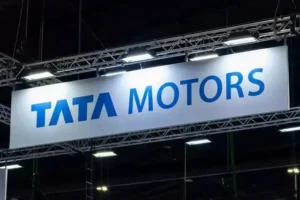
Elon Musk’s Tesla Balances Record Sales With an AI “Robot Army” Ambition
Tesla’s Quarter Rebounds — But Musk Looks Beyond Cars
After a turbulent start to 2025, Tesla has finally recorded a strong rebound in vehicle sales, posting its best quarter ever in deliveries. However, CEO Elon Musk is already shifting attention from electric cars toward a far more ambitious goal: building a “robot army” and achieving full self-driving at scale.
Although Tesla delivered an impressive 497,099 vehicles in Q3 2025, generating $21.2 billion in automotive revenue, its profits fell 37% year-over-year, totaling only $1.4 billion. Despite the sales milestone, rising costs from AI research, restructuring, and tariffs heavily impacted margins.
Between Profit Pressures and Future Vision
Tesla’s third-quarter results reveal a sharp 50% increase in operating expenses, largely due to investments in AI, robotics, and next-gen R&D. The company also incurred nearly $240 million in restructuring charges, possibly linked to the closure of its Dojo supercomputer project.
Moreover, U.S. tariffs added an estimated $400 million hit, amplifying the financial strain. Still, Musk emphasized that Tesla is entering “a critical inflection point,” one defined by the massive scaling of Full Self-Driving (FSD) and the launch of Robotaxi operations.
According to Musk, these initiatives will “fundamentally change the nature of transport,” aligning Tesla’s future more with AI-driven automation than traditional manufacturing.
The Rise of Optimus — and the Cost of Ambition
Musk’s long-promised humanoid robot, Optimus, remains central to Tesla’s AI strategy. On a recent shareholder call, Musk confirmed plans to begin building Optimus Version 3 in early 2026. However, production setbacks and design challenges have delayed earlier goals of producing thousands of robots by 2025.
Despite the difficulties, Musk described the project as potentially world-changing:
“You can actually create a world where there is no poverty, where everyone has access to the finest medical care. Optimus will be an incredible surgeon.”
Although aspirational, such statements reflect Musk’s determination to make Tesla not just a car company, but an AI robotics leader.
Still, this shift comes at a steep price. Tesla’s CFO Vaibhav Taneja stated that capital expenditures will rise substantially in 2026, primarily due to AI, robotics, and Cybercab production investments. The company has also boosted employee compensation to remain competitive in the AI talent war.
A Tense Shareholder Landscape
Beyond its operational challenges, Tesla faces an intense internal debate over Musk’s $1 trillion compensation package, which is up for a shareholder vote soon. While major advisory groups such as ISS and Glass Lewis oppose the plan, it is still expected to pass due to Musk’s overwhelming shareholder support.
On the conference call, Musk reiterated that his focus is on control, not money:
“I just don’t feel comfortable building a robot army here and then being ousted because of some asinine recommendations from ISS and Glass Lewis,” he said.
His comments underscore both Tesla’s reliance on Musk’s vision and the risks tied to his increasingly bold ambitions.
Looking Ahead: A Balancing Act Between Present and Future
Tesla’s record sales highlight strong brand demand, yet its profitability pressures and AI-heavy spending indicate a company in transition. While new, cheaper versions of the Model 3 and Model Y may drive short-term volume, Tesla’s real bet is on automation, robotics, and self-driving ecosystems.
Ultimately, Musk’s “robot army” may define the next chapter of Tesla’s evolution — if he can successfully balance innovation, execution, and investor patience.
Explore Business Solutions from Uttkrist and our Partners’, Pipedrive CRM 2X the usual trial with no CC and no commitments and more uttkrist.com/explore



